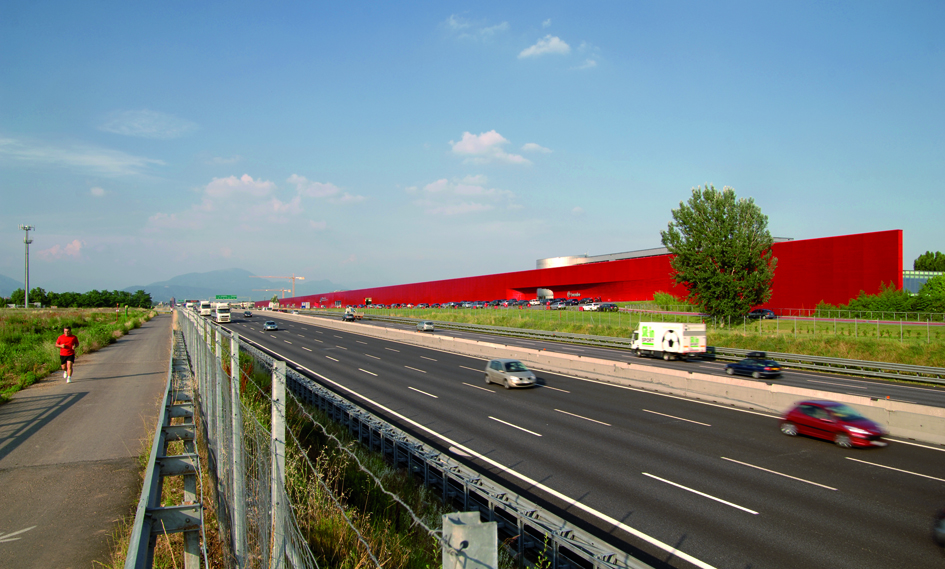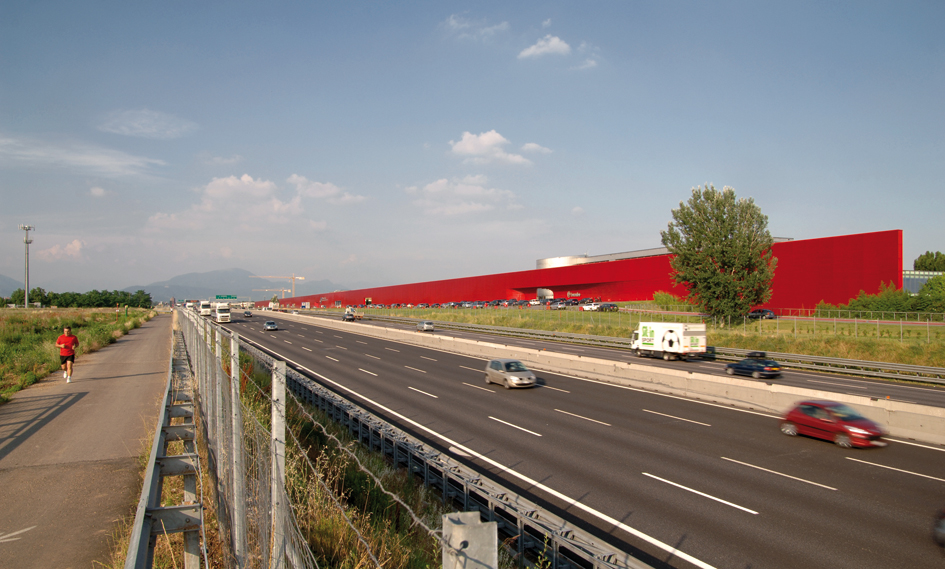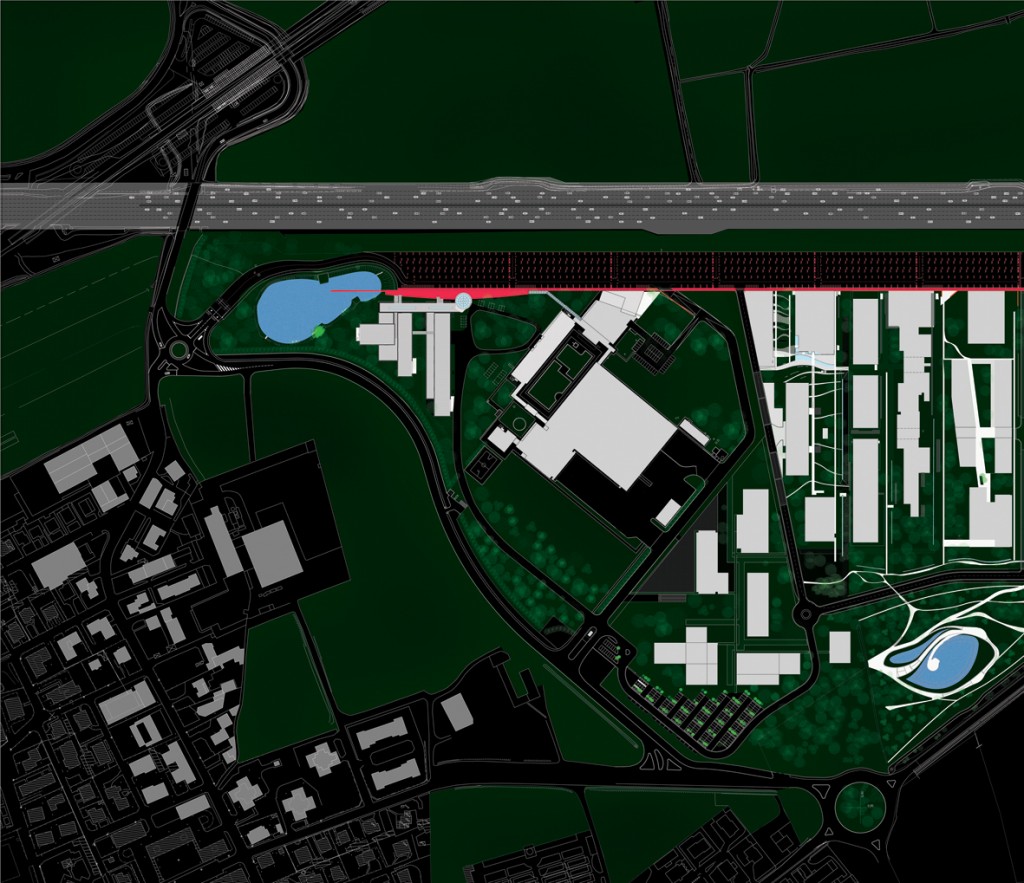critical text by Alberto Ferlenga
a
It is difficult to judge architecture when everything is possible. It is hard to single out something different as an alternative to the “novelties” one finds in such abundance, something that can be distinguished for its evident quality.
Then, within a few years, the picture has changed: many recent works display early aging and many conditions which these emerged from are no longer acceptable. What is the sense of using immoderate resources in order to make immoderate works sustainable? Why disfigure the nature of a place in order to have to amend undesirable consequences?
Actually, a crisis is enough to alter the picture of compatibility and sensitivity as well as to allow matters considered to be out-of-date to emerge. In this way, the capability to interpret complex architectural spaces that take into consideration surrounding events would seem to be once again worth taking into account as important ethical information and common sense. Throughout most recent years, very few works that have been built propose something new with respects to all this. I’ll give you an example: Kilometro Rosso by Jean Nouvel. The element that most characterises this work is, of course, the long red metal wall that stretches, for about a kilometre, parallel to the Milan-Venice motorway, giving rise to a brief yet significant clear cut interlude setting it apart from the succession of non-descript prefabricated buildings. The reasons for which I have chosen this work refer to it being successfully inserted into one of the most disrupted landscapes but above all for its capability to interpret nature, rendering an aesthetically effective oeuvre that is able to attribute value to a “lost” place while indicating, at the same time, a repeatable model.
The size of the Kilometro Rosso is compared to that of the motorway, the long surface interprets the uninterrupted theory of warehouses, the bright colour compresses metres of signs, the car park in the foreground makes the staticity of the parked cars interact with the flow of those which are speeding down the motorway. Everything that the work proposes is generated from something that already exists, confirming that urban “genericity” remains so only until the moment in which someone interprets it rendering its intrinsic qualities both visible and acceptable.
***
È difficile giudicare un’architettura quando tutto è possibile. È arduo staccare dalla massa delle cose “carine” qualcosa di diverso, che sia isolabile per la sua evidente qualità.
Nell’arco di pochi anni, poi, il quadro è mutato: molte realizzazioni recenti mettono in mostra il loro precoce invecchiamento e molte premesse da cui nacquero non sono più accettabili. Che senso ha impiegare risorse smodate per rendere sostenibili opere smodate? Stravolgere la natura di un luogo per dover sanare conseguenze nefaste?
In effetti, basta una crisi perché il quadro delle compatibilità e delle sensibilità cambi e perché questioni date per superate emergano. Così, torna a contare, come dato etico e di buon senso, la capacità di interpretare luoghi complessi attraverso architetture attente a ciò che accade attorno a loro. Poche opere costruite negli anni più vicini a noi propongono qualcosa di nuovo rispetto a tutto ciò. Ne indicherò una: il Kilometro Rosso di Jean Nouvel. L’elemento che più caratterizza l’intervento è, come si sa, un lungo muro rosso di metallo che scorre, per circa un chilometro, in parallelo all’autostrada Milano-Venezia, dando origine a un breve ma significativo intermezzo d’ordine tra il susseguirsi dei prefabbricati. I motivi per cui lo scelgo riguardano il suo riuscito inserimento nel più disgregato dei paesaggi ma soprattutto la sua capacità di interpretarne la natura, restituendo un’opera esteticamente efficace e capace di attribuire valore a un luogo “perduto” indicando, al tempo stesso, un modello ripetibile.
La dimensione del Kilometro Rosso si confronta con quella autostradale, la lunga superficie interpreta la teoria ininterrotta dei capannoni, il colore acceso sintetizza metri di insegne, il parcheggio in primo piano fa interagire la staticità delle macchine posteggiate con il flusso di quelle che percorrono la strada. Tutto ciò che l’intervento propone nasce da ciò che già esiste, a riprova del fatto che la “genericità” urbana rimane tale solo fino al momento in cui qualcuno la interpreta rendendo visibili e accettabili le sue intrinseche qualità.
The text is presented at the exhibition L’architettura che ti piace©/The architecture you like© opened at MAXXI, Rome until 15th May 2011. Info www.fondazionemaxxi.it
Il testo è presentato alla mostra L’architettura che ti piace©/The architecture you like© visitabile al MAXXI di Roma fino al 15 maggio 2011. Info www.fondazionemaxxi.it





